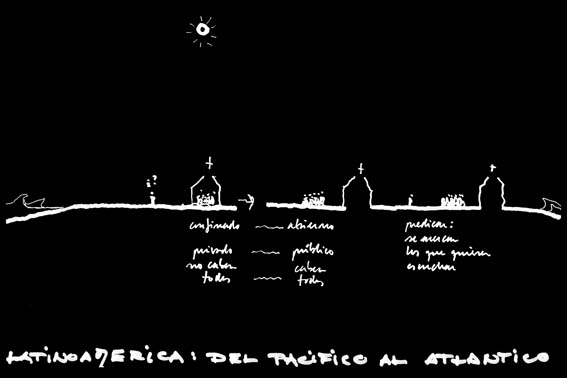Urban and Social Design
Reconnecting the Church
DOI:
https://doi.org/10.17979/aarc.2013.3.0.5094Keywords:
Sacred Architecture, Church, Transformation, Parish, CityAbstract
As first described by Gaudium et Spes, we know the Church's relationship with society should and must evolve. Our moment in history, perhaps, is not as simple as past eras when the Church (the physical edifice and the institution) acted as the axis of both life and culture; churches anchored towns and their public spaces; church bells tolled the order of the day, calling all to toil and prayer alike; the liturgical calendar established the very rhythms of the seasons, and thus life itself. For most modern Westerners, it is no longer so; the Church is far removed from the daily routine. It is the sanctuary where we attend Mass on Sunday, but not much more. For those who have fallen away or have yet to be evangelized, the church building is often nothing more than part of the homogenous fabric that constitutes most urban, suburban and rural cores.
The Church no longer dominates culture and society in the way it once did, and it is forced to compete with virtual connectedness for the attentions, affections and devotion of the masses. How often have you seen a person in a beautifully constructed sacred space entirely consumed by the world encapsulated in their smart phone? Have we become so virtually connected that we are paradoxically disconnected from physical drama of the human condition happening all around us?
The church does not require more grand architectural gestures, but rather new, more networked and nuanced ways to exist and connect to each other and God in the built world; in other words, new ways to manifest to contemporary women and men “the mystery of God, who is their final destiny.” (Gaudiem et Spes)
Downloads
Metrics
References
Arroyo, Raymond. 2013. «Pope Francis’s ‘Mess’», National Review Online, August 1. Accessed October 1, 2013, http://www.nationalreview.com.
Benedict XVI. 2012. Message of His Holiness Benedict XVI for World Mission Day 2012, Vatican Website, January 12. Accessed October 1, 2013, http://www.vatican.va/holy_father/benedict_xvi/messages/missions/documents/hf_ben-xvi_mes_20120106_world-missionday-2012_en.html
Elaine, Louie. 2013. «How a Pop-Up Store Pops Up», New York Times, September 13. Accessed October 1, 2013, http://www.nytimes.com.
Flannery, Austin, ed. 1996. The Basic Sixteen Documents: Vatican Council II. Northport, New York: Costello Publishing Company.
U.S. Department of Justice. 2010. Community Policing Defined. Washington DC: Office of Community Policing Services.
White, Michael. 1990. Building God's House in the Roman world: Architectural Adaptation Among Pagans, Jews and Christians. Baltimore: Johns Hopkins University Press.
















